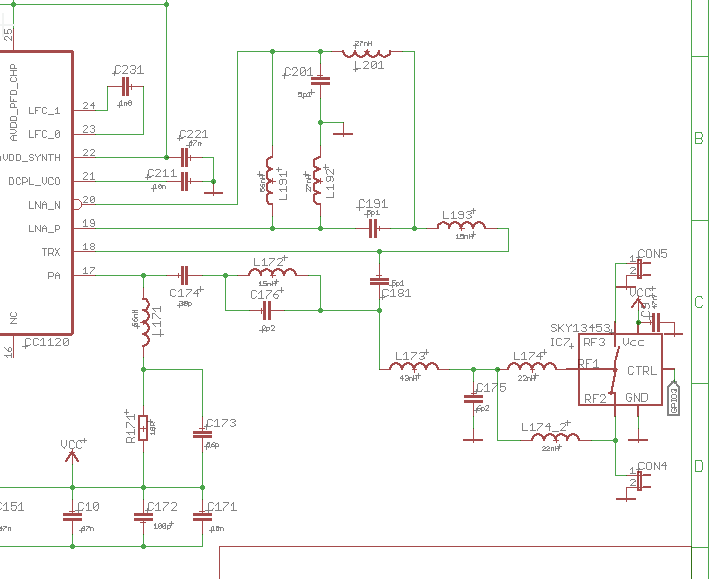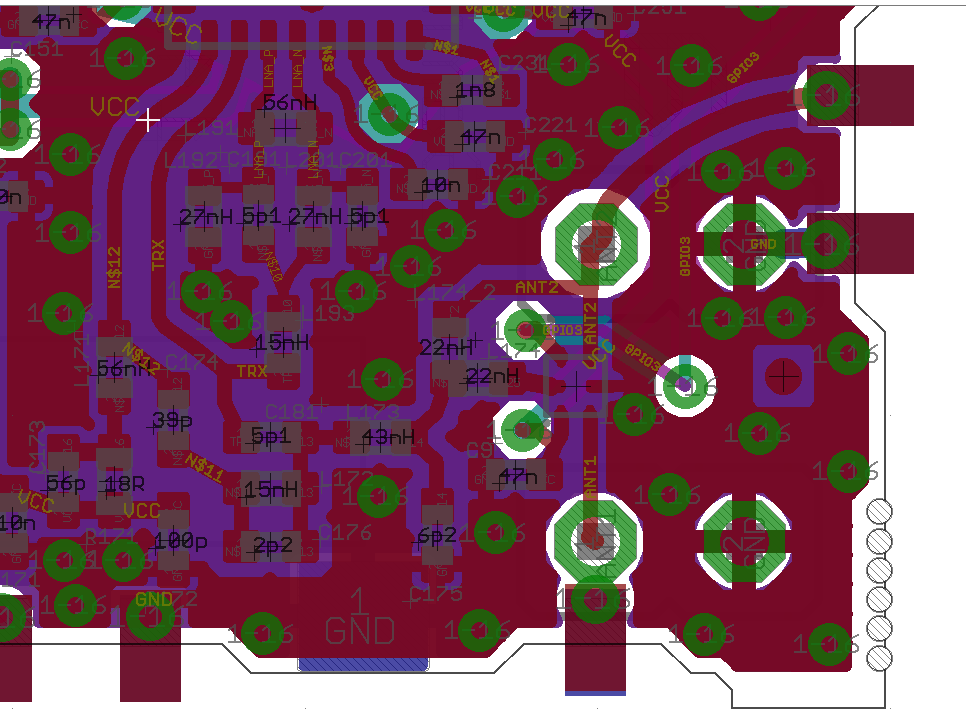Just looking for continous improvement we measured CC1120 sensivity with our typical setup:
12.5kHz CHBW, 3k DEV, 4k symbol rate at 434MHz, starting with our still favorite transparent mode.
RF generator: Marconi / Agilent
Results of BER test:
First of all results of original dev.kit was lausy with -110.5. So we changed CC1120 to an actual revision plus we put our standard TCXO (which is used in all our CC-designs).
Surprisingly we got 6dB better perfomance!
Measuring our own modul we achieve ~1.5dB less.
But it's still far away from the -123dBm which should be possible according data sheet.
Could you experts have look at our design and point those areas where we could achieve certain improvements?
Schematic follows strict TI reference, exception is the antenna RF switch - but this (ANT1 at CON5) is not used, L174 is not placed - L174_2 instead.
And: we want to be open to use that modul not only with our standard pin headers, but also with side platings. That's why we have these solder pads at the edge.
Coils are WW




